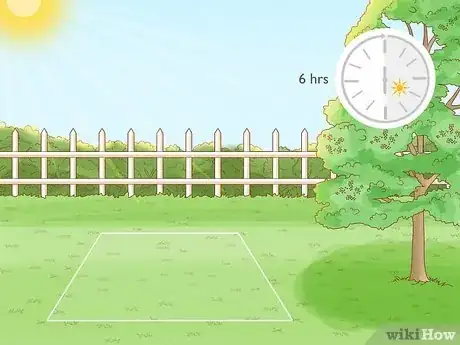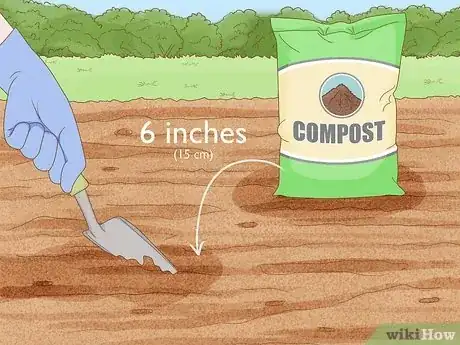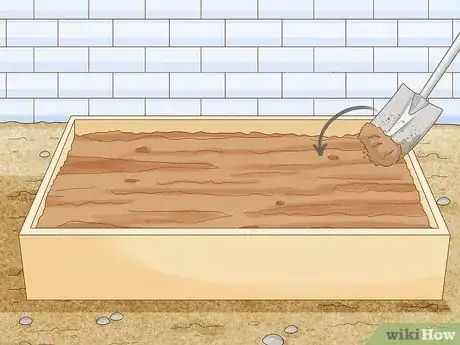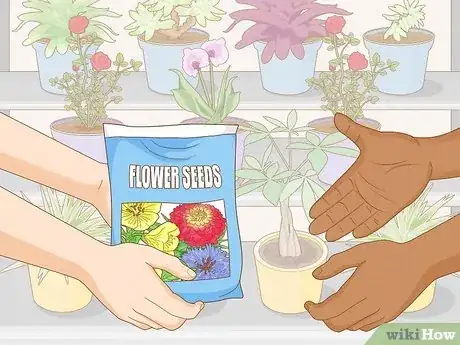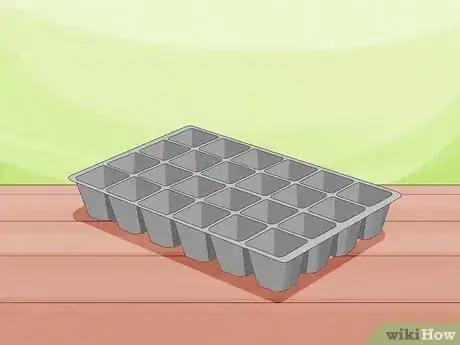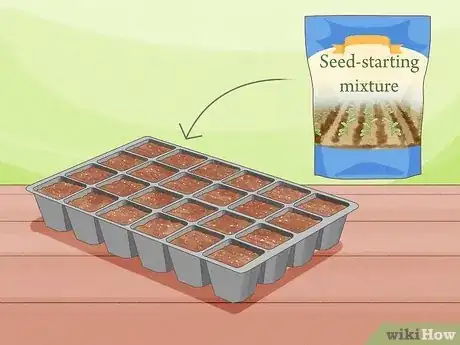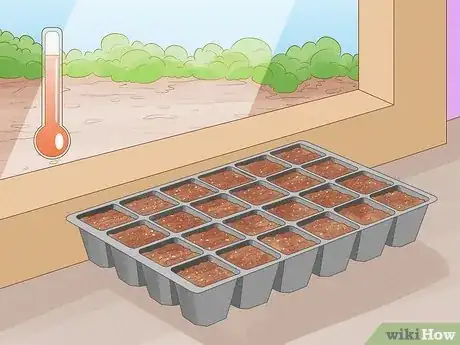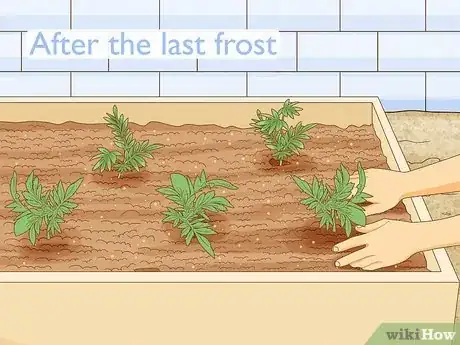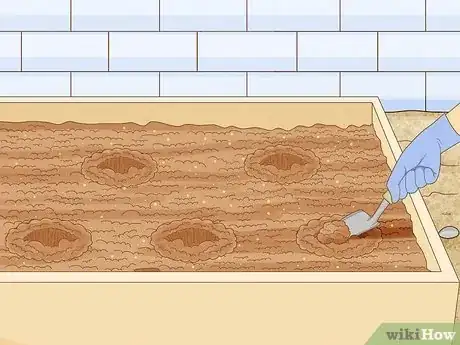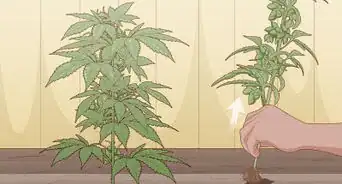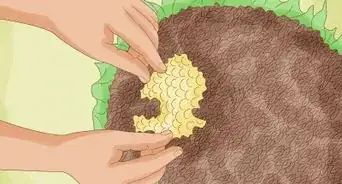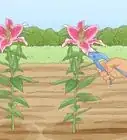This article was co-authored by Ben Barkan. Ben Barkan is a Garden and Landscape Designer and the Owner and Founder of HomeHarvest LLC, an edible landscapes and construction business based in Boston, Massachusetts. Ben has over 12 years of experience working with organic gardening and specializes in designing and building beautiful landscapes with custom construction and creative plant integration. He is a Certified Permaculture Designer, is licensed Construction Supervisor in Massachusetts, and is a Licensed Home Improvement Contractor. He holds an associates degree in Sustainable Agriculture from the University of Massachusetts Amherst.
wikiHow marks an article as reader-approved once it receives enough positive feedback. This article received 11 testimonials and 100% of readers who voted found it helpful, earning it our reader-approved status.
This article has been viewed 482,900 times.
Planting flowers is a great beginning project if you want to start gardening, and they add bright colors to your yard. While gardening isn't an easy task, you'll likely find it a rewarding one. Start by picking a place to grow your flowers and preparing the bed properly. Then you can buy or grow flowers to plant in your new flower garden.
Steps
Getting the Ground Ready
-
1Check the light levels. You may already have an idea of where you want to grow flowers. However, you can't just start planting, as different plants need different amounts of light. You can simply observe your garden over the course of the day, checking on it every hour or so to see which areas get full sun (at least six hours of sunlight) and which areas are partially shaded.[1]
- It can help to make a chart of the areas you'd like to plant, and then mark off "partial" or "full" for every hour you check on the areas.
- Keep in mind that you may have to perform maintenance including deadheading and separating flowers. Make sure to leave space between plants so that you have room to access them .
- Build your garden in small steps. Start with a small flower bed, say a patch that is 5 feet (1.5 m) by 5 feet (1.5 m) or less. A patch that size has room for around twenty to thirty plants with perhaps three types of annuals and one or two perennials.[2]
- Put your garden in a noticeable area. If you plant your garden in a forgotten corner of your yard, you may very well forget it, meaning it could die off without you knowing. However, if you stick it someplace you can see it every day, you're more likely to be reminded to provide the care it needs.[3]
-
2Remove the grass if you have it. To plant flowers, clearing the sod first is essential, as it gives your flowers room to grow. Dig it out by using a shovel to get under the grass and roots and pull out the top layer of grass.[4]
- For a less labor-intensive route, place layers of cardboard all over the area.[5] On top of the cardboard, lay out a covering of compost. The soil covering should be at least 3 inches (7.6 cm) thick.
- Leave the covering on the ground and wait about four months until the sod dies off.
Advertisement -
3Till the soil. Till up the soil to make it loose and crumbly for planting. This will also kill any weeds that are starting to grow.[6] Also, break up any clods with a rake. If you find rocks, remove them from the area. Smooth out the top of the soil so it's mostly level.
-
4Make your soil more fertile. Most garden soil isn't perfect for growing flowers, so you need to enrich it.[7] The easiest way is to add compost, peat moss, or shredded leaves into the top 6 inches (15 cm) or so. Basically, most organic material will work.[8] You can even use old manure.[9]
- If you can't dig into the soil, you can leave the organic material on top, and after a few months, it will become a part of the soil.
-
5Create raised beds in difficult soil. If you find your soil is difficult to work with, create a raised bed. Raised beds are good for areas with soil that have high clay content, as well as soils that are particularly sandy or rocky. You can buy a kit from a local garden store to make your raised garden, and then fill it with soil.[10]
Obtaining Flowers
-
1Pick what you want to grow. When thinking about what you want to grow, consider how much shade and sun the area gets.[11] If it's fairly shady, you need to pick a flower that's going to be happy in that area. Also, consider how much work you want to put into your garden. That is, you can plant perennials that come back every year, but that don't bloom as much as annuals. With annuals, you need to plant them each year, but you'll get more colorful blooms that last longer.[12]
- Also, make sure the flowers you want to grow are zoned for your area. You can look up your zone online or ask at a local nursery.
- Some perennials to try include daylilies, pansies, irises, lamb's-ears, black-eyed Susans, Russian sage, and roses. For annuals, try zinnias, marigolds, cosmos, and sunflowers. You can also mix and match annuals and perennials for the best of both worlds.
-
2Buy seeds or flowers. One simple solution to getting flowers is to simply buy them from a garden store, nursery, or farmer's market. Look for healthy plants with lots of leaf growth. If you'd rather grow your own, you'll need to buy seeds from a garden center or an online catalog.[13]
-
3Find containers for seeds. A simple way to start seeds is to use a cell flat, which has individual spaces for each plant. The plants need to be separated so the roots don't intertwine. However, you can use other individual containers, or even a cardboard egg carton to start seeds. Just be sure whatever you use has a hole in the bottom for water to drain out.
- Some containers are meant to be placed into the ground with the plant because the containers are biodegradable.
-
4Place a seed-starting mixture in the containers. Seed-starting mixtures don't contain any soil and drain well. In addition, they don't contain any weed seeds that could grow in the mixture. Potting soil will also work, but you may not be quite as successful with it.
-
5Plant the seeds inside two to three weeks before the last frost. When you plant the seeds is based on the plant itself. Usually, that information is found on the package, but you can also look online. Often, you can plant two to three weeks before the last frost in your area. However, you don't want to plant too early, as the plants will outgrow their containers before you have a chance to move them outside.
-
6Place one seed in each container. Follow the directions for the plant, but generally, you plant a single seed in each container you have. Plant the seed at a depth that is four times the width of the seed. In other words, smaller seeds need to be closer to the surface, while bigger seeds can go a little deeper.
- Label the seeds, and keep the soil moist to help them grow.
-
7Find a warm spot with good lighting. Windowsills aren't the best place, since the temperature can vary from cold at night to hot in the day. Instead, pick a warm area free from drafts. In fact, you can just use a grow light to provide light to the plants somewhere in your house.
- It can help to use a heating pad meant for seeds. It goes under the containers, which can keep the soil warmer, promoting growth.
- If using a grow light, remember you shouldn't leave it on all the time. It should only be on for twelve to sixteen hours in a day.
Planting Your Flowers
-
1Add some time release fertilizer. As you're getting your garden ready to plant, add time-release fertilizer to the bed, tilling it in as you go. Read the back of the package to get an idea of how much you need to spread out in your bed.[14]
-
2Plant the flowers outside after the last frost. The "last frost" is the last time your area has freezing temperatures in the spring. If you plant before the typical last frost, you'll lose the flowers you planted. You can check with the gardening store or your local cooperative extension, which can give you an idea of when the last frost is for your area.[15]
-
3Dig holes for your flowers. Take your flowers out of their containers and make sure the roots are separated (gently). Dig holes just large enough to place the soil and roots for each plant in the ground.[16]
-
4Place the plants in the ground. Set the plants in the holes you've just dug. Fill in around the plant with soil until it's level with soil of the transplant. Pat the soil down, and water the ground thoroughly once you get everything planted.[17]
- Follow directions for each type of plant to see how far you should space them out. Generally, spacing is based on how big they get when they are mature.
-
5Water as needed. When you first put the new flowers in the ground, you need to water them at least every other day. After that, you'll water as needed, which can vary based on where you live. If you see the flowers wilting in the day or if the weather has been dry, you know it's time to water.[18]
Expert Q&A
Did you know you can get expert answers for this article?
Unlock expert answers by supporting wikiHow
-
QuestionWhen should you start a garden?
 Maggie MoranMaggie Moran is a Professional Gardener in Pennsylvania.
Maggie MoranMaggie Moran is a Professional Gardener in Pennsylvania.
Home & Garden Specialist
-
QuestionHow do you prepare soil for planting?
 Maggie MoranMaggie Moran is a Professional Gardener in Pennsylvania.
Maggie MoranMaggie Moran is a Professional Gardener in Pennsylvania.
Home & Garden Specialist
-
QuestionWhat are the easiest flowers to grow?
 Maggie MoranMaggie Moran is a Professional Gardener in Pennsylvania.
Maggie MoranMaggie Moran is a Professional Gardener in Pennsylvania.
Home & Garden Specialist
References
- ↑ http://getbusygardening.com/how-to-determine-sun-exposure/
- ↑ http://www.bhg.com/gardening/yard/garden-care/ten-steps-to-beginning-a-garden/
- ↑ http://www.bhg.com/gardening/yard/garden-care/ten-steps-to-beginning-a-garden/
- ↑ http://www.bhg.com/gardening/yard/garden-care/ten-steps-to-beginning-a-garden/
- ↑ Ben Barkan. Garden & Landscape Designer. Expert Interview. 2 June 2020.
- ↑ Ben Barkan. Garden & Landscape Designer. Expert Interview. 2 June 2020.
- ↑ Ben Barkan. Garden & Landscape Designer. Expert Interview. 2 June 2020.
- ↑ https://www.realsimple.com/home-organizing/gardening/gardening-flowers/create-cutting-garden
- ↑ http://www.bhg.com/gardening/yard/garden-care/ten-steps-to-beginning-a-garden/
- ↑ https://www.realsimple.com/home-organizing/gardening/gardening-flowers/create-cutting-garden
- ↑ Ben Barkan. Garden & Landscape Designer. Expert Interview. 2 June 2020.
- ↑ http://www.bhg.com/gardening/yard/garden-care/ten-steps-to-beginning-a-garden/
- ↑ https://www.realsimple.com/home-organizing/gardening/gardening-flowers/create-cutting-garden
- ↑ https://www.realsimple.com/home-organizing/gardening/gardening-flowers/create-cutting-garden
- ↑ https://www.realsimple.com/home-organizing/gardening/gardening-flowers/create-cutting-garden
- ↑ http://www.bhg.com/gardening/yard/garden-care/ten-steps-to-beginning-a-garden/
- ↑ http://www.bhg.com/gardening/yard/garden-care/ten-steps-to-beginning-a-garden/
- ↑ http://www.bhg.com/gardening/yard/garden-care/ten-steps-to-beginning-a-garden/
About This Article
To start a flower garden, observe which parts of your garden get the most sunlight during the day. This will help you plan where to plant different flowers according to their sunlight needs. Once you’ve chosen where your garden will go, dig up the grass and till the soil to make it soft and crumbly. Remove any rocks and weeds from the area. Mix some compost into the top 6 inches (15 cm) of the soil to make it more fertile. If your soil is difficult to work with, consider building a raised garden bed instead. Once your garden bed is ready, decide what you want to plant. Purchase potted flowers or seeds from your local garden center and follow the care and planting instructions carefully. For instance, pay attention to how much sunlight each plant needs, how often it should be watered, and what kind of fertilizer it needs. In general, it’s best to plant flowers outside after the last frost of the year. For tips from our Horticulture reviewer on growing flowers from seed, read on!
